This is a fortnightly newsletter about the New Zealand Net. If you would like to be notified by email when a new edition is published, please contact ZL1NZ.
Browse our newsletter Archive and List of Net Tips.
Featured key
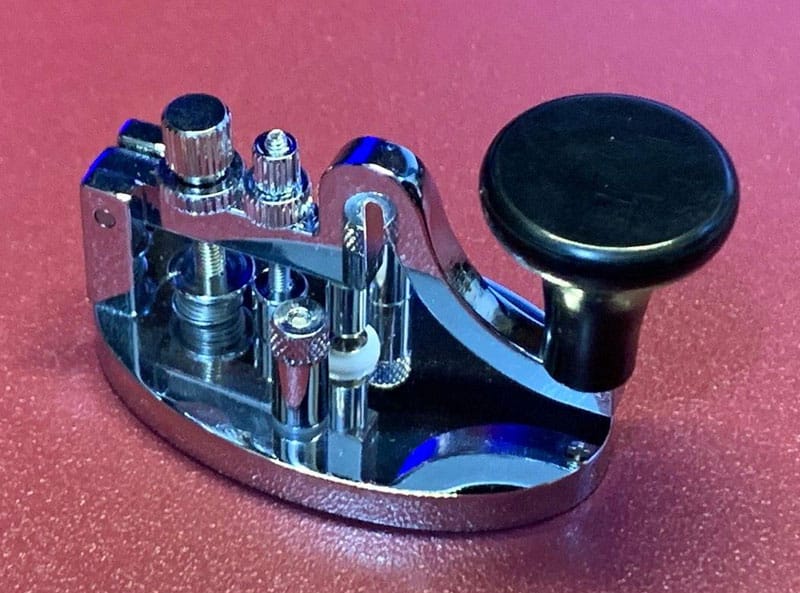
Vibroplex Camelback Miniature Straight Key. Photo: KM4AHP
Miniature paddles and straight keys seem to be very popular these days, probably related to the growth in portable activities such as SOTA and the availability of many ultra-compact CW transceivers.
Vibroplex has jumped into the mini market with a camelback miniature straight key. This key measures just 25mm x 50mm and 32mm high. It sells for US$100.
* If you have an interesting key for this feature, please send me a nice clear photo and a few words describing it.
Quick notes
Steve ZL2KE is off the air for a while, working on his new tower which has necessitated taking down the 80m aerial.
David ZL2WT has also had his aerial down – but not intentionally. A falling tree took it out, but David quickly had the wire back in the air while he contemplated his new supply of firewood, just in time for winter.
Dave ZL4LDY remains off the air due to computer problems that prevent him accessing the remote station he uses.
Mick ZL1HJ in Te Kuiti has been listening to the Net, and gave me a call after a recent session. We hope he’ll be a regular QNI soon.
FISTS Downunder is holding a “Weekend Warrior” contest from 0001UTC Saturday 8 May – 0930UTC Sunday 9 May on 80, 40, 20, 15 and 10m. Here are the details.

Photo flashback
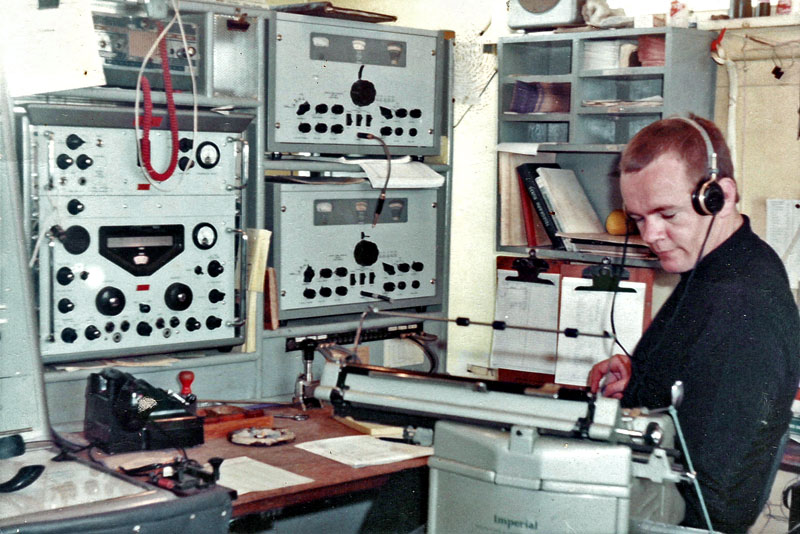
John Brennan operating radiotelegraph at Chatham Islands Radio ZLC in 1968. Photo: Allan Burgess
Signals Wild…Signals Caged
My son is an avid birdwatcher. As his understudy, I’ve learned the names of the birds that hang out in our yard and gather at local wetlands.
On a recent walk we saw one of our favourites, an American kestrel, a small raptor that terrorises lizards and mice in the foothills on both sides of the San Francisco Bay. The bird’s coloration is a surprising mix of blue, brown, orange, yellow, and white, adorned with an array of black dots.
Finding a kestrel in the wild is like stumbling upon a rare gem, lying on the ground.
The bird reminded me that when I was a kid, I often hunted for gems of a different sort: DX. I was a novice, and in the early 1970s, novices were limited to working DX Of The First Kind: CW.
Audio challenge: Storm warning from ZLW
Here’s a vintage recording (courtesy ZL2TX) of a storm warning being broadcast from Wellington Radio ZLW.
Your challenge: Tell me (via QTC or email) the area where winds are forecast to reach 35-45 knots.
QRV?
[AUDIO NO LONGER AVAILABLE]
Morse musings: The warm-up
Lots of us like to warm up the key (or our brain) before we start to send. One of the traditional ways to do this is to send:
BENS BEST BENT WIRE
I like that one because it forces me to concentrate on getting the spacing between characters and words right, especially on the world “wire”. This is where using a CW decoder can be helpful. If the phrase doesn’t come up perfectly decoded, then I know I need a little more warm-up.
Recently, I saw a variation on the above phrase which has perhaps an even nicer rhythm. Try this one:
BEST BENT WIRE /5
What’s your favourite warm-up? Send me a note so we can share it with other readers.
Video: Hospitality attracts new club members
I saw this video and thought it could be useful to any of our readers who are trying to attract new blood to their amateur radio club.
A friend of mine used to tell me “ham radio is not a team sport.” Unfortunately, a lot of radio clubs seem to have taken that philosophy to extremes, making visitors feel like they’re just a nuisance.
The video has some good ideas on how we can all make our clubs more hospitable – and maybe sign up some new hams too. And it starts before we even meet the newcomer…
Preservation: Wanganui Vintage Radio Museum
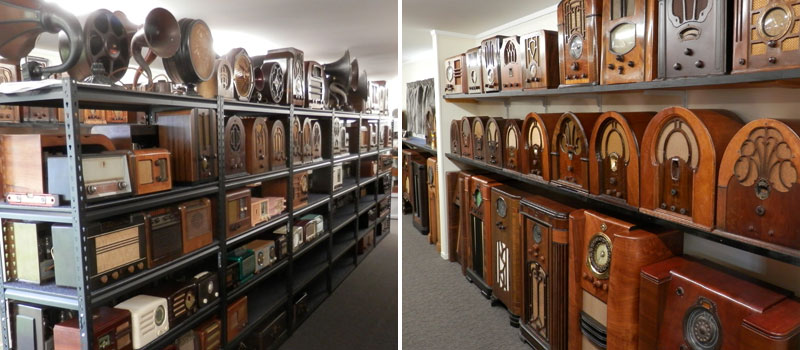
Just part of the collection at the Wanganui Vintage Radio Museum
If you’re into old broadcast receivers, then a trip to Whanganui should be on your bucket list.
This town of 48,000 people in the Manawatu-Whanganui region of the North Island is home to Graham Hawtree’s collection of more than 500 valve receivers dating from 1918 to the late 1940s.
Graham’s purpose-built museum is open to visitors free-of-charge, although you do need to make an appointment.
Have any of our NZ Netters visited?
Net tip: QRT
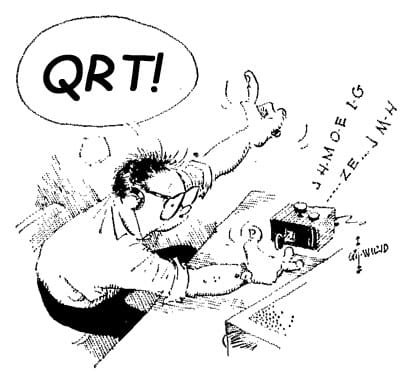 Some amateurs may be surprised to learn that the Q signal QRT means “Stop sending”, as in “STOP SENDING RIGHT NOW!”.
Some amateurs may be surprised to learn that the Q signal QRT means “Stop sending”, as in “STOP SENDING RIGHT NOW!”.
So, if you hear NCS send “QRT” it doesn’t mean he is shutting down. (That would be “CL”.) Rather, it means he wants YOU to stop sending.
This signal isn’t used very often, but perhaps it could be if NCS is trying to copy someone you cannot hear.
“QRT?” means “Shall I stop sending?”.
Cartoon: Gildersleeve
Advertising archive
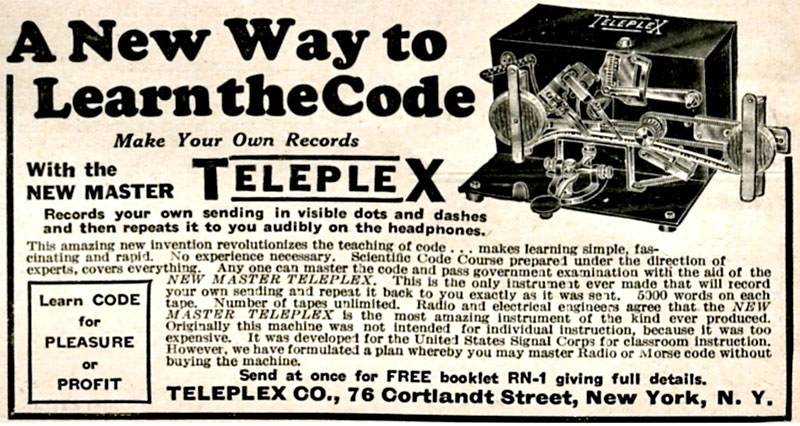
Radionews, January 1933
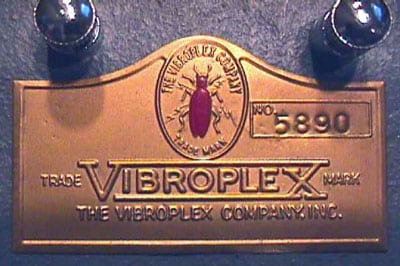 Did you notice in this advertisement how similar the Teleplex logo was to the logo that Vibroplex had been using since the early 1920s, at least? Maybe they were hoping some of the success of Vibroplex would rub off on their own product.
Did you notice in this advertisement how similar the Teleplex logo was to the logo that Vibroplex had been using since the early 1920s, at least? Maybe they were hoping some of the success of Vibroplex would rub off on their own product.
Suggestions?
If you have suggestions on how to make the NZ Net better, or things you’d like to see covered in these updates, please contact ZL1NZ. You might even like to write something for the newsletter.
Thanks for reading, and I hope to see you soon on the NZ Net!
—
Neil Sanderson ZL1NZ, Net Manager
New Zealand Net (NZ NET)
3535.0 kHz at 9pm NZT Mon-Fri


